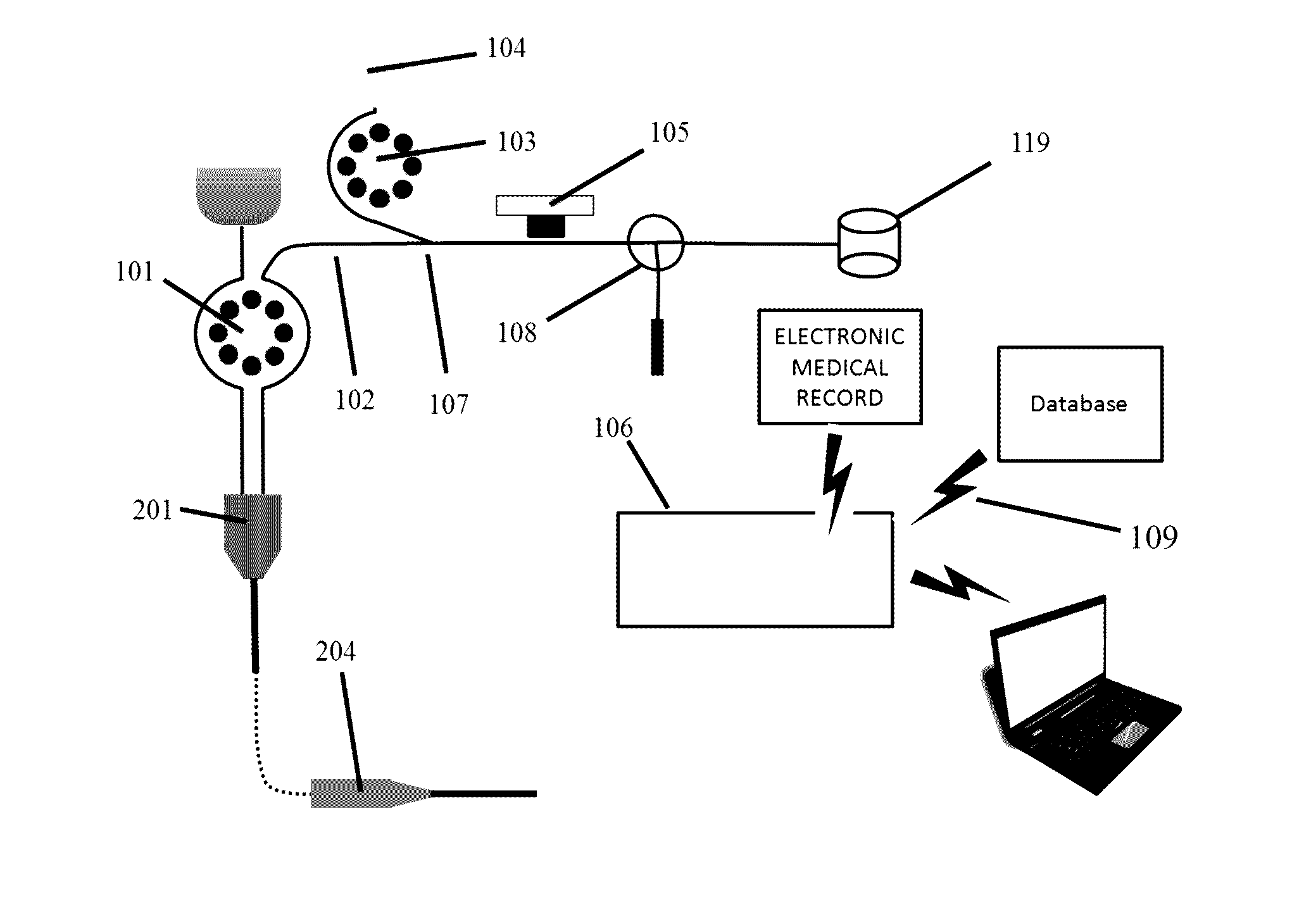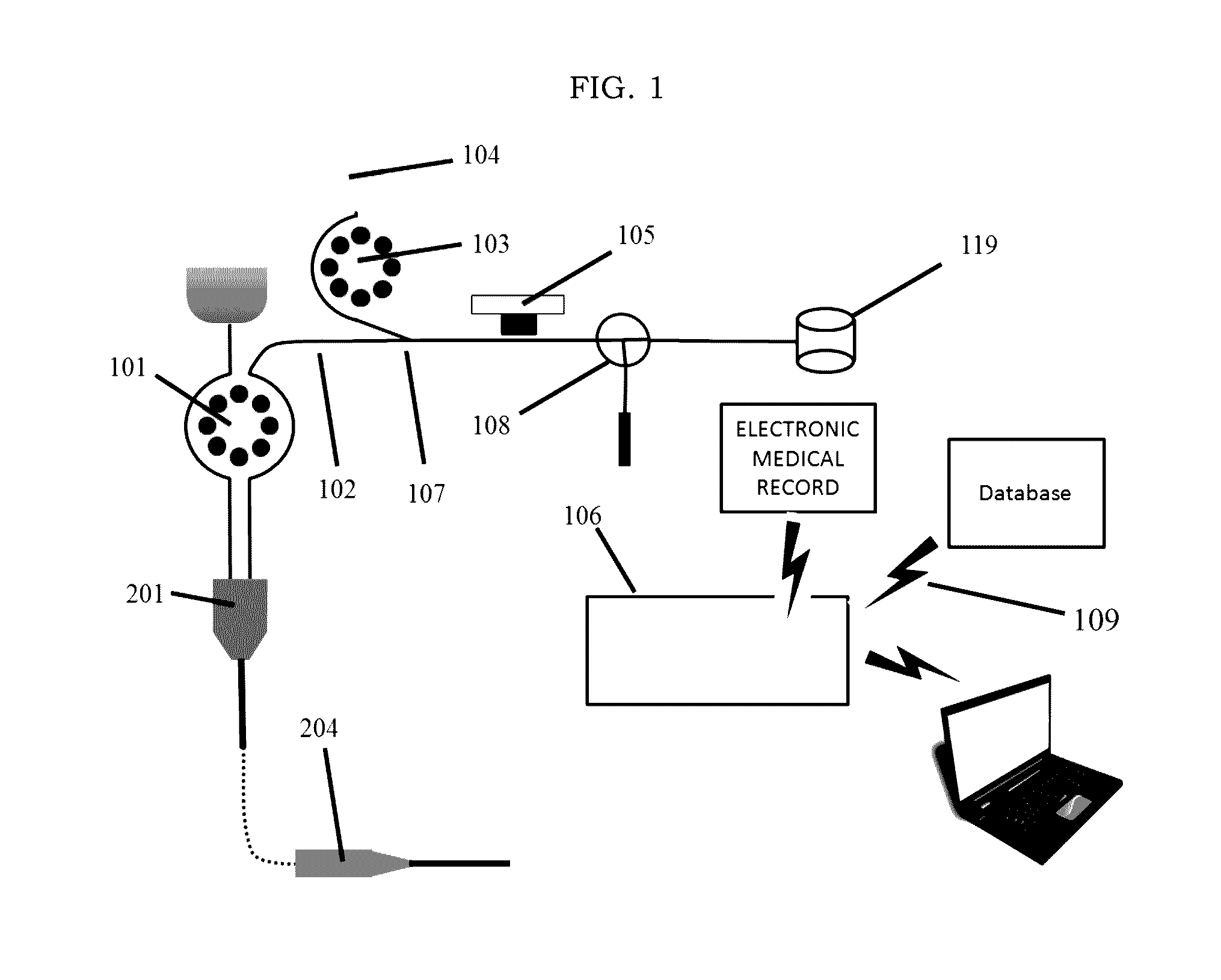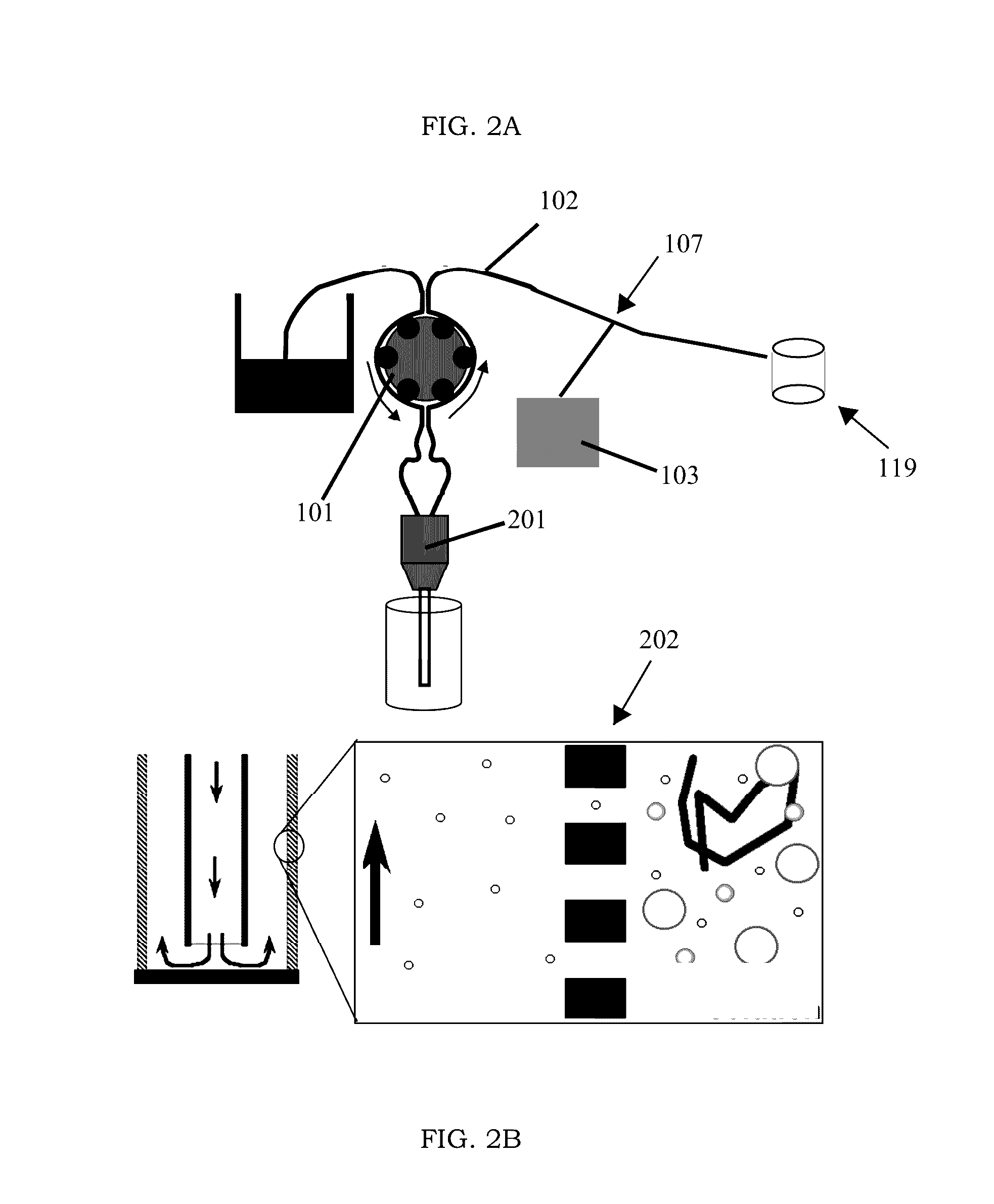Device and Method for Clinical Data Sampling and Specimen Banking
a technology for clinical data and specimens, applied in the field of specimen collection and storage, can solve the problems of insufficient progress in the study of diseases and biomarkers, lack of standardized methods, and inability to automate patient sampling and data collection. and other problems, to achieve the effect of improving the process of collecting and storing samples
- Summary
- Abstract
- Description
- Claims
- Application Information
AI Technical Summary
Benefits of technology
Problems solved by technology
Method used
Image
Examples
Embodiment Construction
[0017]As shown in FIG. 1, the data sampling and banking system comprises a pump 101 for moving a sample through tubing 102, a separate, secondary pump 103 for injecting a spacer fluid 104 through a junction 107, such as a Y-connector or valve, into the tubing 102 containing the sample, a sensor 105 for identifying samples within the tubing 102, a microprocessor 106 for operating the sample pump 101 and secondary pump 103, for receiving, storing, and transmitting data from one or more sensors 105, and for retrieving information from the Electronic Medical Record (EMR) or other data sources, and a valve 108 with a side port inline with the tubing 102 for immediate dispensing of samples if desired.
[0018]In the preferred embodiment, the tubing 102 is microfluidic tubing having an inner diameter of about 0.66 millimeters. However, an inner diameter from about one nanometer to several thousand micrometers is acceptable. The upper size limit is dependent on maintaining sample separation an...
PUM
 Login to View More
Login to View More Abstract
Description
Claims
Application Information
 Login to View More
Login to View More - R&D
- Intellectual Property
- Life Sciences
- Materials
- Tech Scout
- Unparalleled Data Quality
- Higher Quality Content
- 60% Fewer Hallucinations
Browse by: Latest US Patents, China's latest patents, Technical Efficacy Thesaurus, Application Domain, Technology Topic, Popular Technical Reports.
© 2025 PatSnap. All rights reserved.Legal|Privacy policy|Modern Slavery Act Transparency Statement|Sitemap|About US| Contact US: help@patsnap.com



